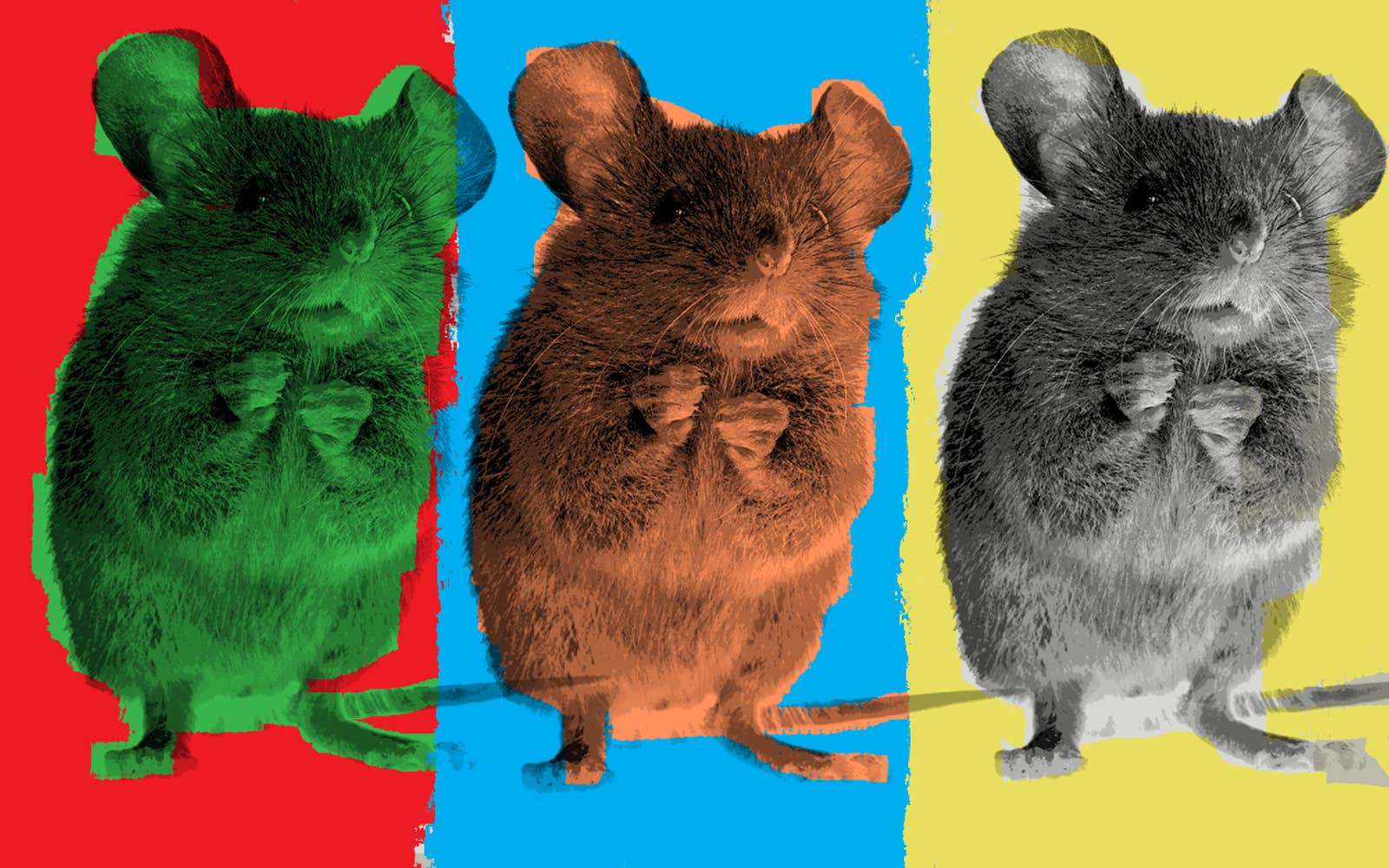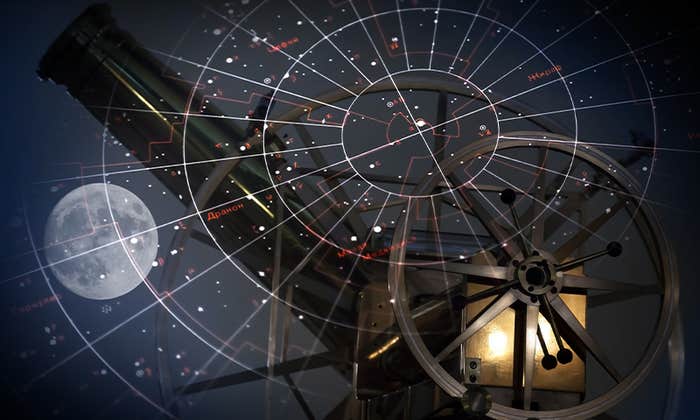On April 14, 1954, Albert Einstein gave the last lecture of his life. Speaking to physics students at Princeton University, he remarked that although quantum mechanics works, “it is difficult to believe that this description is complete. It seems to make the world quite nebulous unless somebody, like a mouse, is looking at it.”
Einstein was referring to the central paradox that bedevils quantum physics, then as now: the measurement problem. Before an atom is detected by a scientific instrument—a Geiger counter, the measuring devices of the Large Hadron Collider, arrays of half-silvered mirrors, or what have you—it can inhabit multiple locations simultaneously. This phenomenon, called “superposition,” seems absurd because, upon detection, the atom is found at a single position.
Each mouse state believes there is but one mouse-self making merry in one world.
Einstein’s mouse simile was a jab at the widely accepted “collapse” postulate, which declares that the act of measuring or observing an atomic particle forces it into one location, somehow. The postulate arbitrarily discards all of the atom’s positions but one, contradicting the fundamental rule of quantum mechanics, the Schrödinger equation, which tracks the atom’s evolution through time without losing any information about its superposed properties.
Taking notice of Einstein’s rodential remark was a second-year grad student, Hugh Everett III. In his soon-to-be-written doctoral thesis, Everett would explain away the measurement paradox. His solution treated the universe as completely quantum mechanical, obeying the Schrödinger equation without recourse to the illogical (and never observed) collapse mechanism. Everything that ever was or ever will be is a giant quantum superposition, a completely determinate universe of universes.
The penalty for theoretical simplicity? Mouse becomes mice.
In September 1970, cosmologist Bryce Dewitt popularized Everett’s model as the many-worlds interpretation of quantum mechanics. Writing in Physics Today magazine, DeWitt was deliberately sensational, insisting on metaphysical realism for the possibilities inherent in the superposition: “[Everett’s] universe is constantly splitting into a stupendous number of branches, all resulting from the measurement-like interactions between its myriad of components. Moreover, every quantum transition taking place on every star, in every galaxy, in every remote corner of the universe is splitting our local world on earth into myriads of copies of itself.”
An evocative image, indeed, but not Everett’s. Although he is widely credited with inventing the quantum multiverse model, his language was less dramatic.
As philosopher Jeffrey A. Barrett at U.C. Irvine has noted, it is important to realize that Everett was not a metaphysician, but an empiricist. His argument was simply that vanilla quantum theory can already explain our observations without any need for collapse. The reason is that observers are every bit as quantum as atoms. They, too, can exist in superpositions, the elements of which are encoded in a mathematical device called a “wavefunction.” Each time a mouse-observer measures a superposed atom—a process governed by quantum mechanics—the observer’s wavefunction splits repeatedly until it connects to each of the many locations of the atom. If the atom is superposed at 100 positions, or states, the mouse who interacts with it is superposed in 100 states, each with a memory of finding the atom at one location. Each of those mouse states proceeds to evolve independently, never feeling the splits, believing there is but one mouse-self making merry in one world, blind to her copies.
Everett explained: “[I]t is not so much the system which is affected by the observation as the observer, who becomes correlated to the system.… From the present viewpoint all elements of the superposition are equally ‘real.’”
“At this point we encounter a language difficulty.”
Without a collapse to select one possibility out of the full range, the theory implies that all physically possible events occur, somewhere. But “somewhere,” to Everett, merely meant a term in a mathematical superposition. He did not associate it with a literal place, as DeWitt and later interpreters did. He believed that science should not make ontological claims concerning the unobservable. We can infer the full superposition by performing repeated measurements on identically prepared atoms and observing the variety of outcomes, but we do not ever observe it directly.
Everett wrote in his dissertation: “Once we have granted that any physical theory is essentially only a model for the world of experience, we must renounce all hope of finding anything like ‘the correct theory.’ There is nothing which prevents any number of quite distinct models from being in correspondence with experience (i.e., all ‘correct’). And furthermore no way of verifying that any model is completely correct, simply because the totality of all experience is never accessible to us.” This inability to see the full range of possible experimental outcomes is not a limitation of the theory, but an essential feature, because it explains the appearance of indeterminism in a deterministic theory. The indeterminism reflects our imperfect knowledge.
That is not to say that Everett did not engage in metaphysical speculation, as long as it was kept separated from science. He knew that his interpretation could lead you down a mouse hole. “The price,” he wrote, “is the abandonment of the concept of the uniqueness of the observer, with its somewhat disconcerting philosophical implications.” He added: “At this point we encounter a language difficulty.”
Everett did not dismiss alternative interpretations that supplemented quantum theory with new elements, going by the name of hidden variables and ensembles. As if to confirm his ontological agnosticism, different physicists have interpreted his formalism in vastly different ways: many worlds, many minds, decoherent histories, relational quantum mechanics. But the core of Everett’s insight—accepting the ruthlessly linear logic of quantum mechanics—has lost none of its power in more than half a century.
After his dissertation was published in 1957, Everett abandoned quantum mechanics. He made a living designing top-secret weapons systems for the Pentagon and died of a heart attack in 1982, even as ever-widening acceptance of the many worlds was making him famous.
The fate of the mouse is unknown.





























